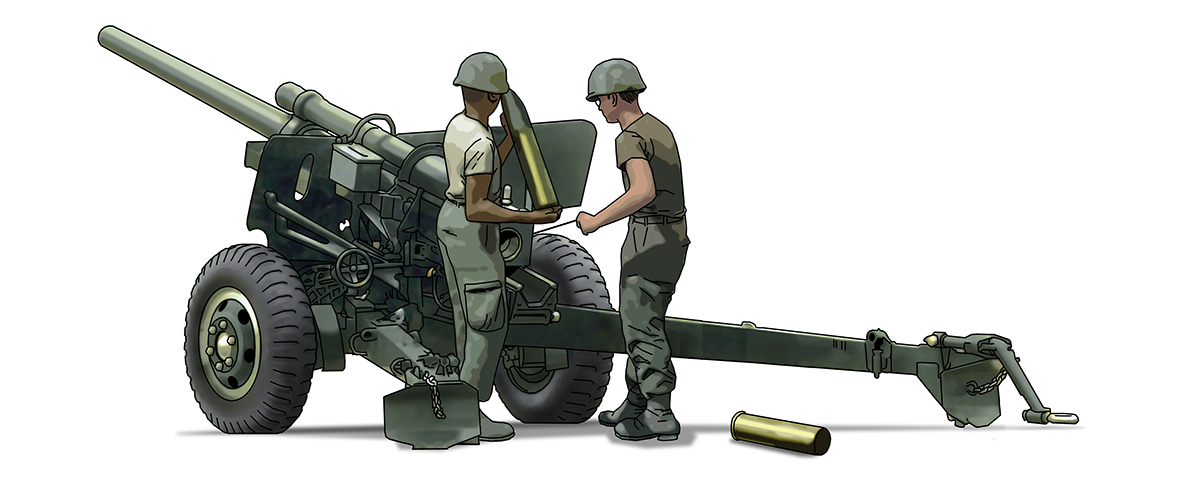The ubiquitous 105MM howitzer was the mainstay of every firebase and used in nearly every major battle of the Vietnam War. The first “105” prototype was built in 1920 and, after much modification, approved as the M-1 105mm field howitzer and M-1 towed carriage in 1928. The howitzer didn’t enter production until 1940, when the transition from horse-drawn to mechanized transport led to the T-2 split-trail carriage and the production model designated the M-2A1. The M-4 model was built for mounting on self-propelled carriages while an M-3 lightweight variant with shortened barrel was used briefly as an airborne and “infantry” gun during World War II. In 1947 the last major production model of World War II, the M-2A1 and M-2A1 carriage (with a shield) was redesignated the M-101. The M-101A1, which featured a larger shield, became the predominant model to see service in Vietnam.
The M-101 had a horizontal sliding wedge breech block mechanism and a hydro pneumatic recoil mechanism that had a consistent 42-inch run, but absorbed so much of the recoil that a well-emplaced carriage rarely shifted during firing. The propellant charge came in a brass canister that held seven charges. Loaders set the number of propellant charges based on the range and height of the target. The 105’s maximum elevation of 1156 mils (66 degrees/13 minutes) gave it a high-angle fire capability to engage reverse slope targets, critical against an enemy who exploited the terrain as effectively as the VC and NVA. Ammunition included High Explosive rounds, White Phosphorus, Illumination, Smoke, High Explosive Anti-Tank (HEAT) and the Anti-Personnel or “beehive” round that fired some 10,000 flechettes out to a range of approximately 100 meters. Employed as a last-ditch defense against a close-in infantry assault, the beehive round cut a devastating swath 30 degrees either side of the muzzle.
The M-101 and its variants were first used in Vietnam by the French in 1946. Virtually all the armies involved in the Indochina conflicts used it, including the Viet Minh, Pathet Lao and Khmer Rouge. It remains in limited service in Southeast Asia to this day.
Originally published in the February 2009 issue of Vietnam Magazine.






